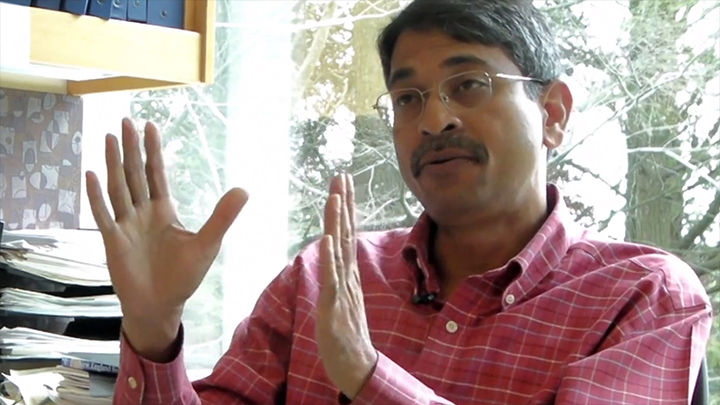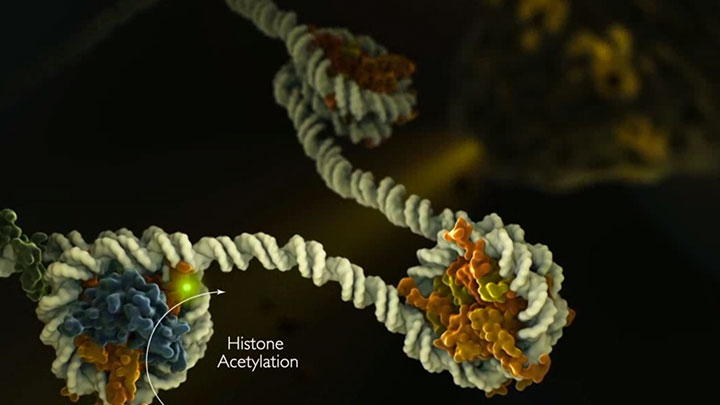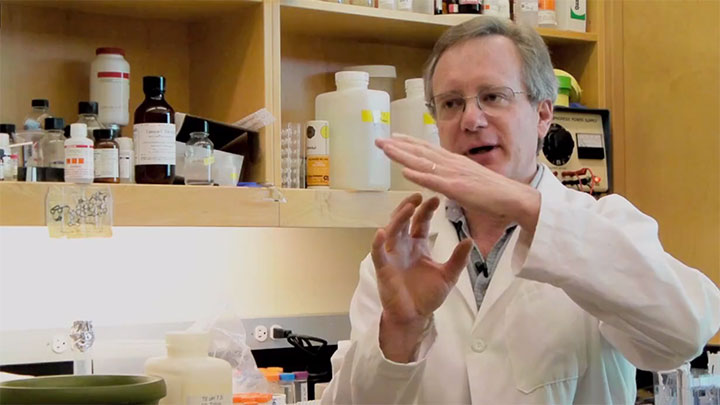How Complex is Epigenetics?

Script
Sriharsa Pradhan, PhD:
What we call in non-scientific jargon, is that we call them a reader and writer. So writers are the protein molecule, or the enzyme to write on the DNA, write on the histone molecule. And readers are some of the guys who look at, oh this is a place where DNA is methylated or histone is methylated. Then these proteins have specific domain, like PSG domain, or chromo domain. They recognize the signatures on histone or DNA methylation. They will sit down there and make a much stronger repressor complex.
It is like, imagine a situation, it's like an ant colony. They find sugar, one ant senses, and that ant's sense will invite the other ants to come together, and after some time the big ant gathering will happen. In the same way, if you have a methylation signature, first the methyl-binding protein will look into that and bind, then the chromatin will have other factors that are going to bind onto the methyl-binding protein, and they make a transcriptionally impossible complex.
How can a gene become un-silenced?
Sriharsa Pradhan, PhD:
Now, the question now comes is that, okay. If a gene is transcriptionally silent, how did it get un-silent basically, or how do you revert back? So for that actually many a time you'll see that it could be a complete change of signature on the chromatin, especially you will see histone deacetylation is transcriptionally silencing, but histone acetylation is transcriptionally active. So the histone which are transcriptionally silent. Now they get acetylated, so there's a series of protein segment called histone acetyltransferase, they will come and take care of the business. In the same way DNA demethylation can occur.
Now recently we know that 5-Methylcytosine can be converted to 5-Hydroxymethylcytosine, which is an oxidative product of the signature that was involved in DNA silencing. But more and more knowledge is coming that 5-Hydroxymethylcytosine probably either transcriptionally active signature, either we are a repair mechanism where 5-Hydroxymethylcytosine gets removed and cytosine comes into the DNA strand by eradicating the signature and making the gene active, or simply that 5-Hydroxymethylcytosine does not allow those proteins to attach to the depressor complex there by just keeping the track clear so the protein molecule can go down the track. mRNA will go down the track and make the protein.
Are there epigenetic mechanisms besides DNA methylation?
Sriharsa Pradhan, PhD:
Although then the methylation signature and acetylation signatures on DNA and histone molecule, there are other small molecules also involved in epigenitive processes such as micro RNA, small RNA, sometimes even long non-coding RNA. So these are involved in also modulating how a gene should work, and what time frame it should work, and what are the environmental factor it is going to response and work. So if you look into epigenetics, it's a very big field, and there are multiple players here, and it's a very complex field.
So epigenetics is essentially is a very important phenomemon. If participants in development, diseases and many other kind of neurological psychological things too.
Related Videos
-

What Is Epigenetics? -

Interactive Tutorial Explaining the Phenomenon of Epigenetics at a Molecular Level -

What Does Epigenetics Have to Do with Honeybees?

